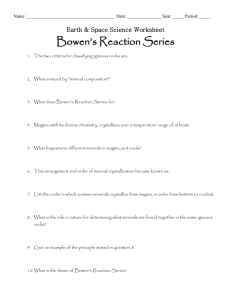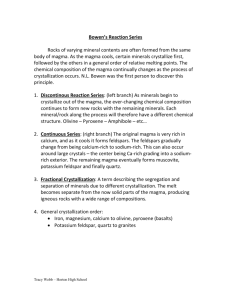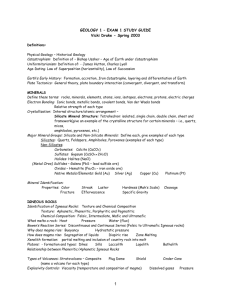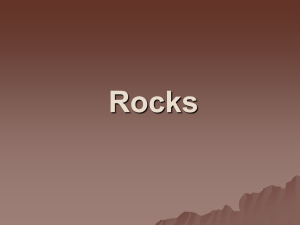What are Igneous rocks?
advertisement
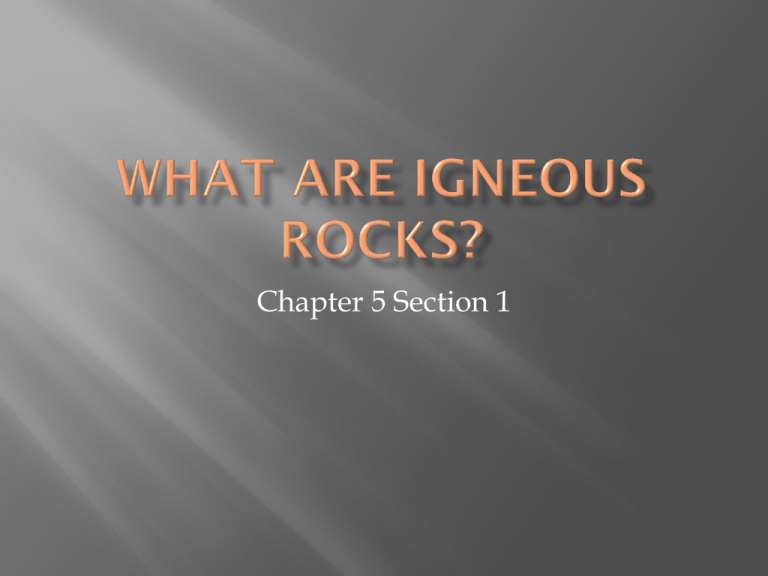
Chapter 5 Section 1 Lava Igneous Rocks Rocks that form when lava or magma cools and minerals crystallize Partial Melting Magma that flows out onto Earth’s surface Some minerals melt at low temperatures while others remain solid Fractional Crystallization The first minerals that crystallize from magma are the last minerals that melted during partial melting. Heat that melts rocks Theory The remaining energy from Earth’s molten formation Heat generated from decay of radioactive elements Type of igneous rock that forms depends on the type of magma Magma A slushy mix of molten rock, dissolved gasses and mineral crystals. Silica most abundant Others include: Oxygen, silicon, aluminum, iron, magnesium, calcium, potassium, sodium Silica Greatest effect on magma characteristics Magma classifications-based on silica amounts Basaltic Andesitic Rhyolitic Silica content affects melting temperature and how quickly it flows Silica content: 42-52% Hawaiian Islands Freely flowing liquid Oozes out through cracks in ocean floor or spills out of volcanoes Silica content 52-66% Cascade Mountains, Andes Mountains Composition between basaltic and rhyolitic Can produce violent volcanic eruptions Silica Content more than 66% Yellowstone National Park Less dense than basalt Thick, stiff magma Violent volcanic eruptions Magma forms Melting Earth’s crust Melting within mantle Four main factors Temperature Geothermal gradient- Earth’s temp. increases Pressure Increases with depth Water content Amount of water present can change the melting point of the rock. Mineral content Elements and compounds give magma its overall character. Melting points of minerals differ Basalt melts at high temperature Granite melts at low temperature Rocks rich in iron and magnesium melt at higher temperatures than rocks containing higher levels of silicon Not all parts of a rock melt at the same temp. Elements and compounds affect melting temp Igneous rocks are a combination Some parts of rock melt at lower temp than others. If the temp is not high enough to melt the whole rock Resulting magma will have a different composition than the original rock N.L. Bowen showed that as magma cools and crystallizes, minerals form in predictable patterns. Two main branches Continuous gradual change (feldspar group) Abrupt change (iron group) Undergo abrupt changes as magma cools As the temperature drops enough for a new mineral to be formed Previously formed minerals react with the magma and new minerals are formed Continuous change As magma cools Earliest formed minerals have high levels of calcium As they cool farther and react with the magma, they become sodium rich If cools too quickly, calcium rich minerals do not react completely leaving zoned crystals P. 115
